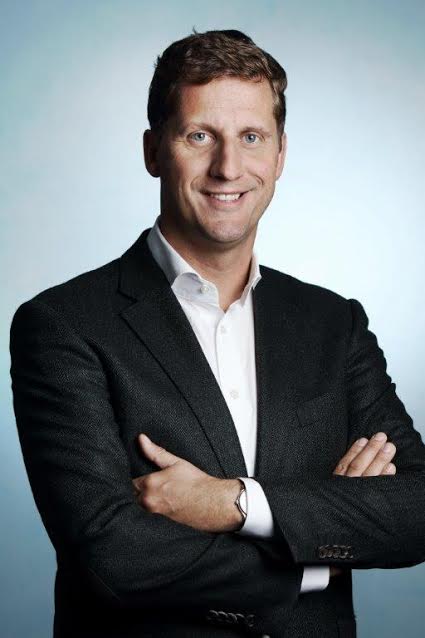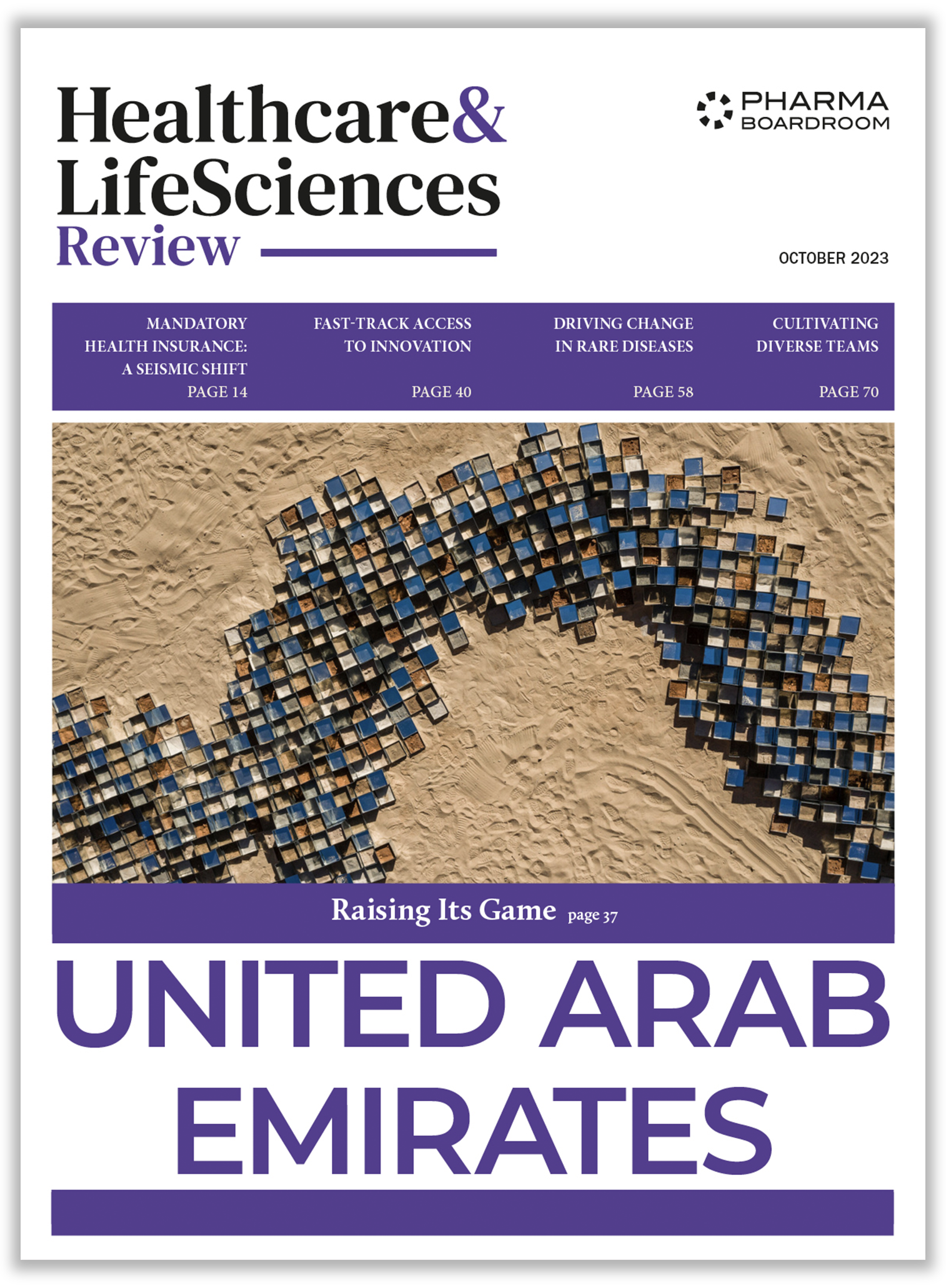Specializing in ultra-rare diseases, Alexion targets patient populations of less than 20 patients per million. Christophe Bourdon discusses Alexion’s progress towards developing access for patients across the EMEA region.
Alexion relocated the EMEA headquarters from Lausanne to Zurich last year: what makes Zurich the optimal location to lead the EMEA region from?
As SVP for EMEA, my role is to make sure we can provide a high calibre of support to the 30 countries across the region in which we operate. In addition, to accomplish our global mission to develop and deliver transformative therapies for patients with devastating rare diseases, it is very important that we are able to recruit talented professionals with strong track records in the life sciences. Thus, the main driver behind our move was our growing need for highly talented and experienced professionals to help support and sustain our growth across the region.
When we decided to relocate our EMEA headquarters, we had considered a number of cities both in Switzerland and other parts of Europe. However, given our positive 8 years of experience in Switzerland – being located in Lausanne – we felt that Switzerland was the right place to stay. Within Switzerland, Zurich has the largest talent pool and, being based here now, we have access to a wide group of people with extensive experience in the life science industries, as well as academics and students from universities.
Of course there are other clusters in Switzerland with significant talent pools, however, Zurich’s most closely matches our needs, and the infrastructure here is truly state of the art.
You mention needing talented professionals with strong track records to accomplish Alexion’s mission. What is that mission?
Alexion is unique in our commitment to developing and delivering transformative treatments for life-threatening ultra-rare diseases where no therapeutic alternative exists for patients.
To put this into perspective, out of a patient population of one million, about 50 000 people would have a condition like diabetes; less than 500 would have a rare disease; and less than 20 patients would have an ultra-rare disease. And the ultra-rare diseases we treat impact even fewer patients than this.
Since day one, Alexion’s mission has been to focus solely on discovering treatments for patients affected by these incredibly rare diseases, many of whom will die from their disease without treatment.
As an example, the first indication for our first product Soliris was for the treatment of paroxysmal nocturnal hemoglobinuria (PNH) – this is an ultra-rare disease that destroys red blood cells. It is an acquired disease which means it develops at some point in a patient’s life – usually around their 30s – and it is progressive, which means it develops and worsens over time. Without Soliris, one-third of patients diagnosed with PNH died within five years.
As well as developing transformative treatments for ultra-rare diseases, our aim is to engage with regulators, payers, and healthcare providers to ensure our treatments are available to the patients who need them. It is also crucial to have our dedicated teams on the ground to educate physicians about these diseases, and implementing diagnostic initiatives to help ensure that patients receive an accurate and rapid diagnosis.
What role has the EMEA region, and Switzerland in particular, played in Alexion’s mission: developing treatments for patients with life-threatening ultra-rare diseases?
Key research centres and hospitals across the EMEA region have played a critical role in Alexion’s R&D programs, and we also have our own R&D centre in Paris, which we opened two years ago. In Switzerland specifically, the medical research centres and the network is renowned, and we have recently partnered with the University of Zurich to create a fellowship in bioinformatics specialized in rare diseases. We are very proud to have just enrolled the first fellow into the program.
In terms of the rare disease environment, the EU introduced the European Regulation on Orphan Medicinal Products in 1999, and the Swiss Federal Council approved the implementation plan for the first National Concept for Rare Diseases in 2015. We are now looking forward to seeing the implementation of this national plan in Switzerland, and how it will positively affect both the access and innovation environment for rare diseases.
Success in achieving access and supporting diagnosis — are clearly correlated to sales and revenues. Q2 2016 financial results showed that Alexion achieved 18% revenue growth with 23% growth in volume. What was the contribution of the EMEA region to this global performance?
EMEA is a significant contributor to the company’s global performance; about one-third of Alexion’s revenue typically comes from the EMEA region. This is a result of a strong foothold in more than 30 countries with over 800 colleagues working in the region. It took Alexion many years of hard work to really reach this point. Soliris was approved in the EU as the first and only treatment for patients with PNH in 2007, and for atypical hemolytic uremic syndrome (aHUS) in 2011. Today, we still are working on achieving access to treatment for patients in some countries. And we are still collaborating with physicians and healthcare providers to find and diagnose patients across the region.
In today’s political and media environment, high-cost medicines draw political and media attention, and as products targeting ultra-rare diseases, Alexion’s products are all high-cost per patient medications. Given this scrutiny, what is your strategy for engaging payers?
Alexion is one of the very few biotech companies focusing on patients with extremely rare diseases. These patients are often forgotten, and they and their families suffer with little hope. As an innovator, Alexion has focused on delivering life-changing treatments to these patients who do not have any alternative.
When we engage with payers, the first thing we discuss is how severe and debilitating these diseases are – how it is a matter of life or death. We discuss the transformative benefits our products bring to patients – for example, how with a treatment option like Strensiq, babies can survive past the first year of life and go on to live more or less normal lives. And finally, we emphasize just how rare these diseases are; particularly in comparison to other conditions which themselves are considered rare. This is what payers recognize; the devastating nature of the disease, the rarity and the associated challenges of that rarity, and how life-changing the benefits of our treatments are.
You have mentioned Strensiq and Kanuma, two new products which were approved by the EMA last year. Can you tell us a bit about the potential these products have to transform and change patient’s lives?
Kanuma is indicated for lysomal acid lipase deficiency (LAL-D) – an ultra-rare disease that affects babies, children and adults, who lack an enzyme that helps them process lipids and fats. In newborns, it is particularly devastating as they rapidly accumulate fat in the liver– 100% of infants studied in a historical cohort died in the first year without treatment. In our clinical studies with Kanuma, 67% of patients who presented with rapidly progressive LAL-D in the first 6 months of life survived past one year.
Strensiq is a treatment for hypophosphatasia (HPP) which is caused by a particular hereditary genetic mutation. With HPP, patients lack an enzyme which is needed for bone structures to grow normally. In severe cases in newborns, it is fatal, as they cannot grow a ribcage properly, which eventually leads to an inability to breathe. In other cases, we see young children or adults who are prone to bone fractures, experiencing extremely severe pain, and sometimes bound to a wheelchair. These patients often end up going from one physician to another, in search of an accurate diagnosis. In recent years, medical communities have learned a lot about this disease, including how to recognize the signs and symptoms of HPP, so they can identify the patients who can benefit from Strensiq.
We are very proud that patients in Germany now have access to both Strensiq and Kanuma. After 12 months of discussions with the authorities, we have reached an agreement for full reimbursement of both products in-line with our EU label and with no restrictions. Germany is traditionally the first country to grant reimbursement in the EU, and we are currently engaged in discussions with the relevant authorities in countries across the EU including France, the UK, Italy and Spain.
What will be the next steps for Alexion to reach more patients and drive growth over the next few years?
Continuing to expand access to Soliris remains a significant priority – there are still countries in the EMEA region where patients do not have access, and where patients are still often undiagnosed.
We are also focusing on maintaining launch momentum with Strensiq and Kanuma – this means ensuring healthcare providers and payers understand the rarity of LAL-D and HPP, the devastating impact it has on patients, and how our treatments can really transform lives.
However, what is most encouraging for me is that, beyond Soliris and our new metabolic franchise with Strensiq and Kanuma, we have a very strong pipeline – more than 10 products in clinical development and 30 in preclinical development. Crucially, we’re planning to obtain 6 new product or indication approvals between now and 2018. We have a lot to prepare for on this front. We’ve already engaged leading research centres and hospitals across the region in the clinical development process. We also have a medical team in place studying how these conditions are currently being handled by healthcare systems across Europe and reviewing the patient journey to reach a proper diagnosis.
An Alexion motto is “we see what others do not.” Looking forward five years in the EMEA region, what opportunities do you see that the rest of the healthcare and life science community might not?
I have had the chance in my role to travel to a lot of places and meet patients; most of these patients have spent a significant amount of time not knowing what was wrong with them, what caused their health problems and their physical pain, until very recently. If you can’t understand the symptoms and put a name on the disease, it’s a terrible sensation – many suffer for over a decade without knowing why.
For a small number of these patients, who have felt alone and without hope for years, we can change that. Day by day, and step by step, Alexion can work to help these patients to be properly diagnosed and treated.
We can’t help all patients in this terrible position, there are over 7,000 rare diseases and it has taken us, as a company, 24 years to bring to market 3 products in 4 indications. But, that is what drives myself and my team every day – the journey is only just beginning, but every day we work so we can bring some hope to those who have none.







